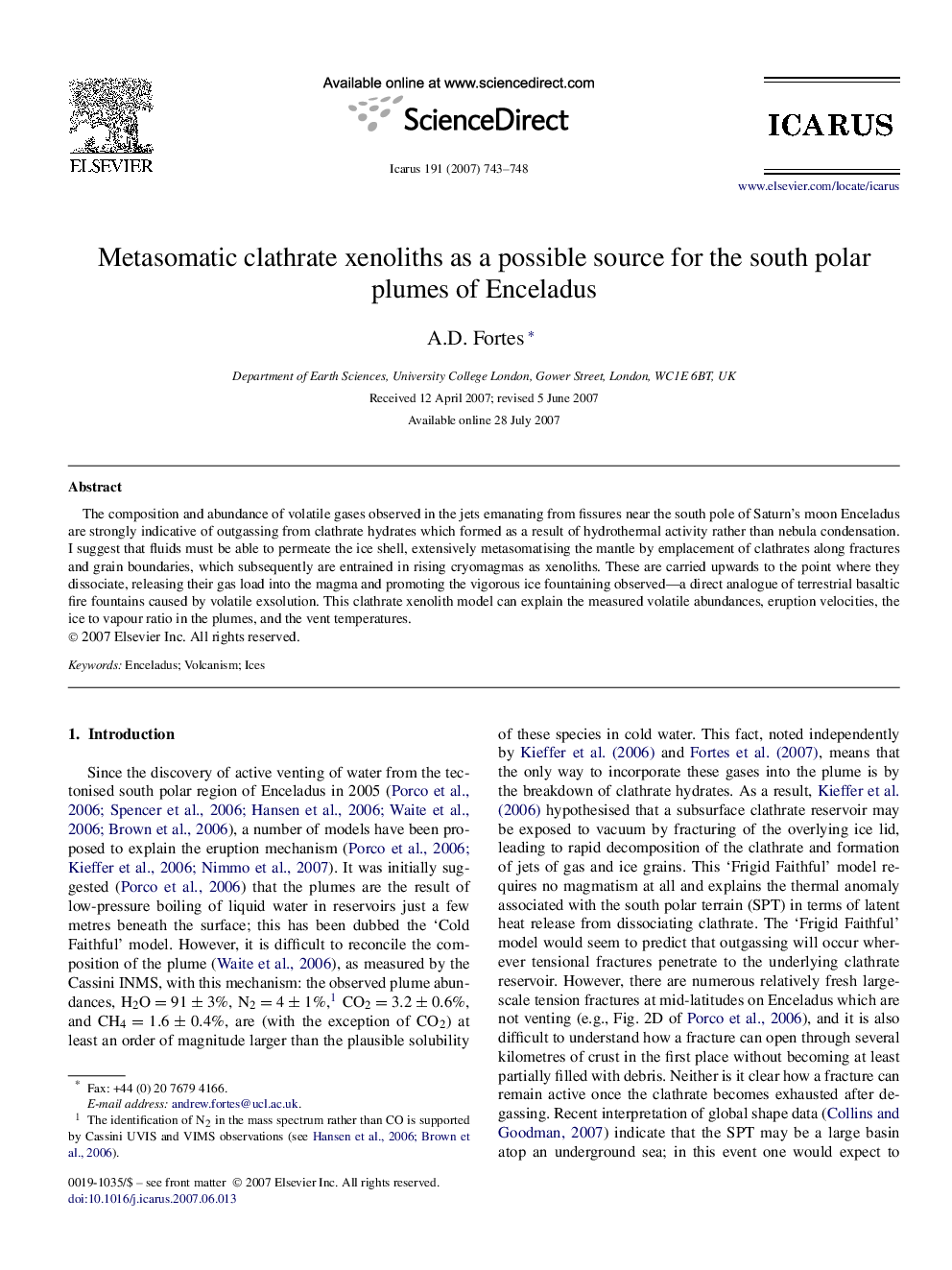| Article ID | Journal | Published Year | Pages | File Type |
|---|---|---|---|---|
| 1775486 | Icarus | 2007 | 6 Pages |
The composition and abundance of volatile gases observed in the jets emanating from fissures near the south pole of Saturn's moon Enceladus are strongly indicative of outgassing from clathrate hydrates which formed as a result of hydrothermal activity rather than nebula condensation. I suggest that fluids must be able to permeate the ice shell, extensively metasomatising the mantle by emplacement of clathrates along fractures and grain boundaries, which subsequently are entrained in rising cryomagmas as xenoliths. These are carried upwards to the point where they dissociate, releasing their gas load into the magma and promoting the vigorous ice fountaining observed—a direct analogue of terrestrial basaltic fire fountains caused by volatile exsolution. This clathrate xenolith model can explain the measured volatile abundances, eruption velocities, the ice to vapour ratio in the plumes, and the vent temperatures.
